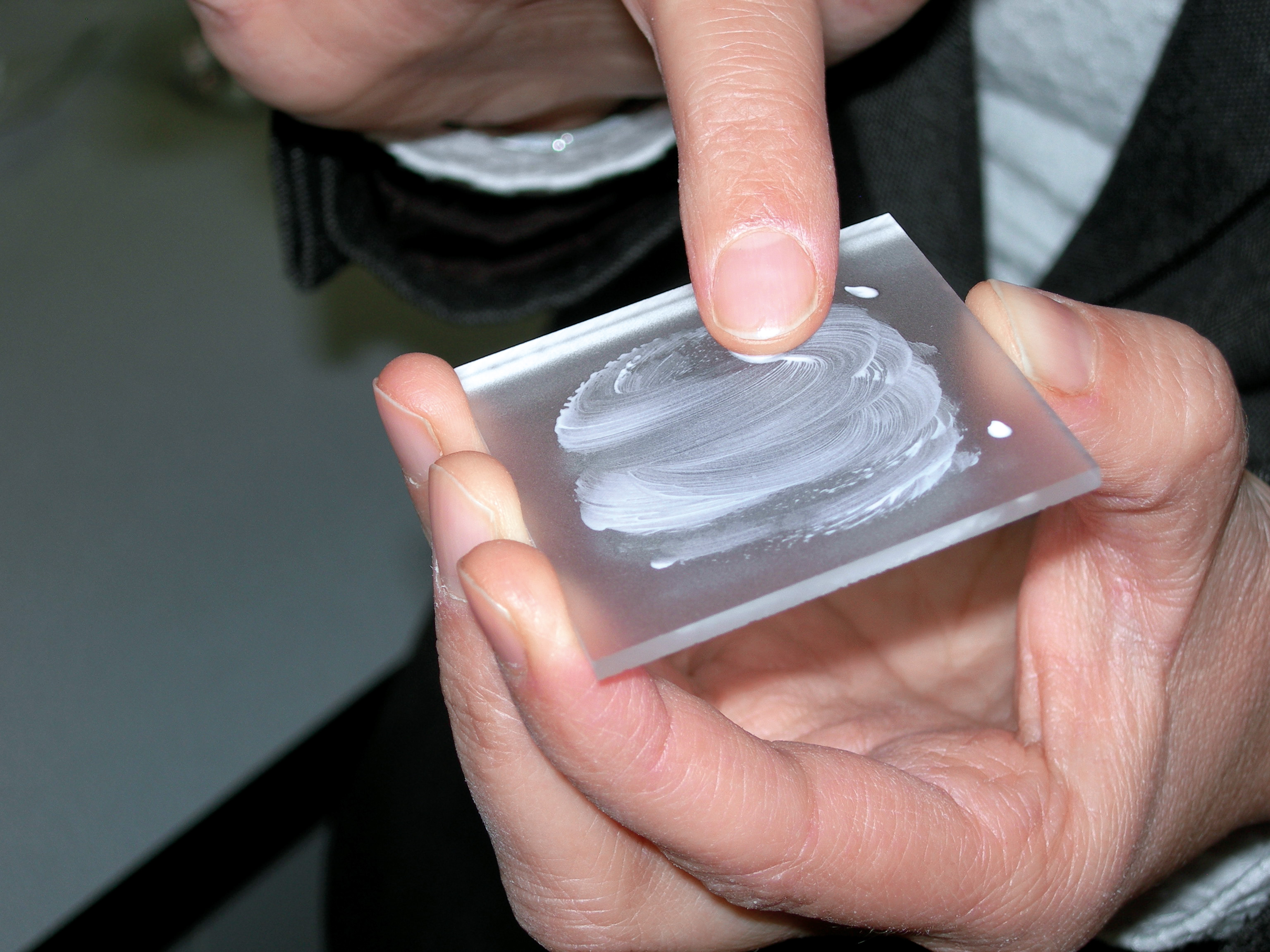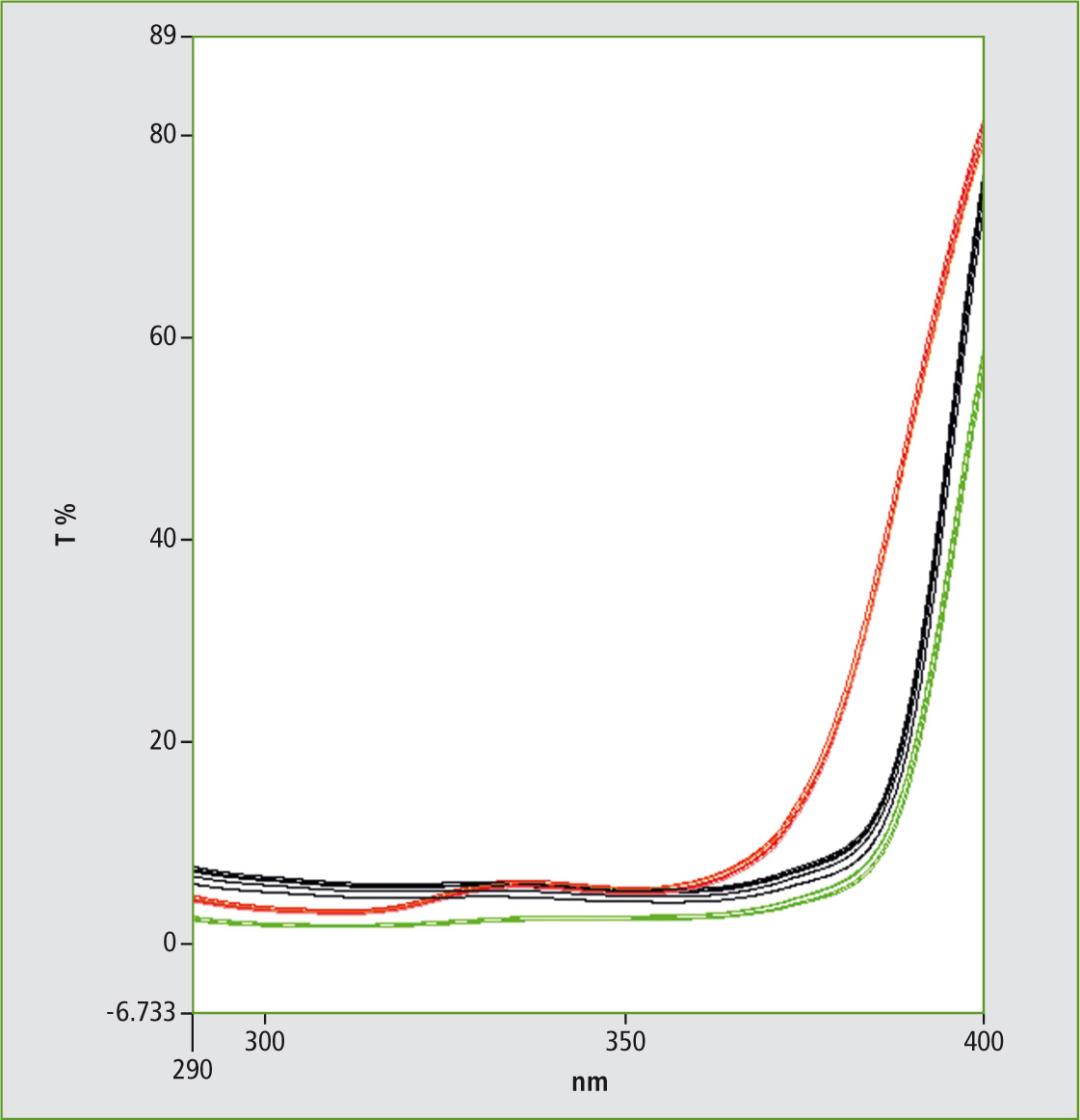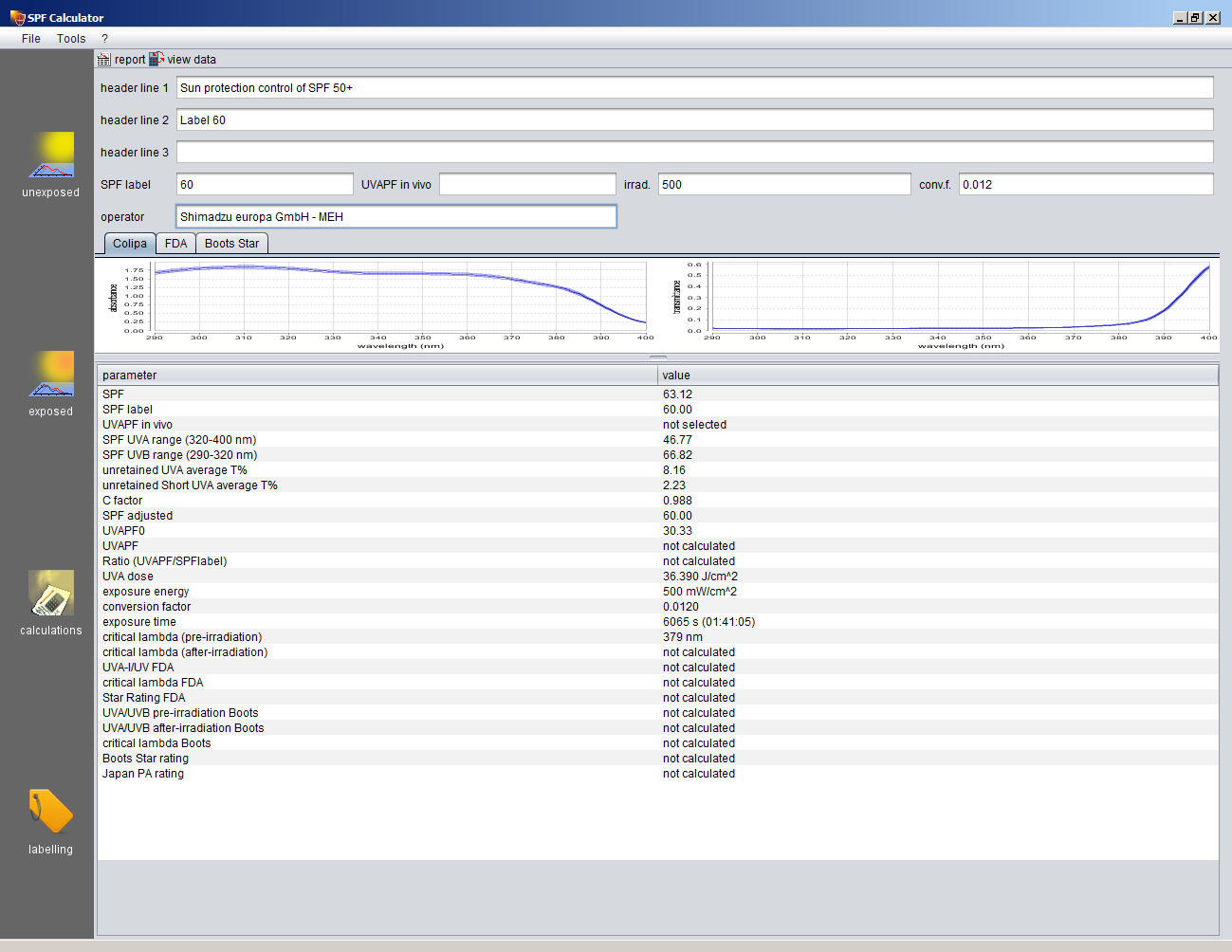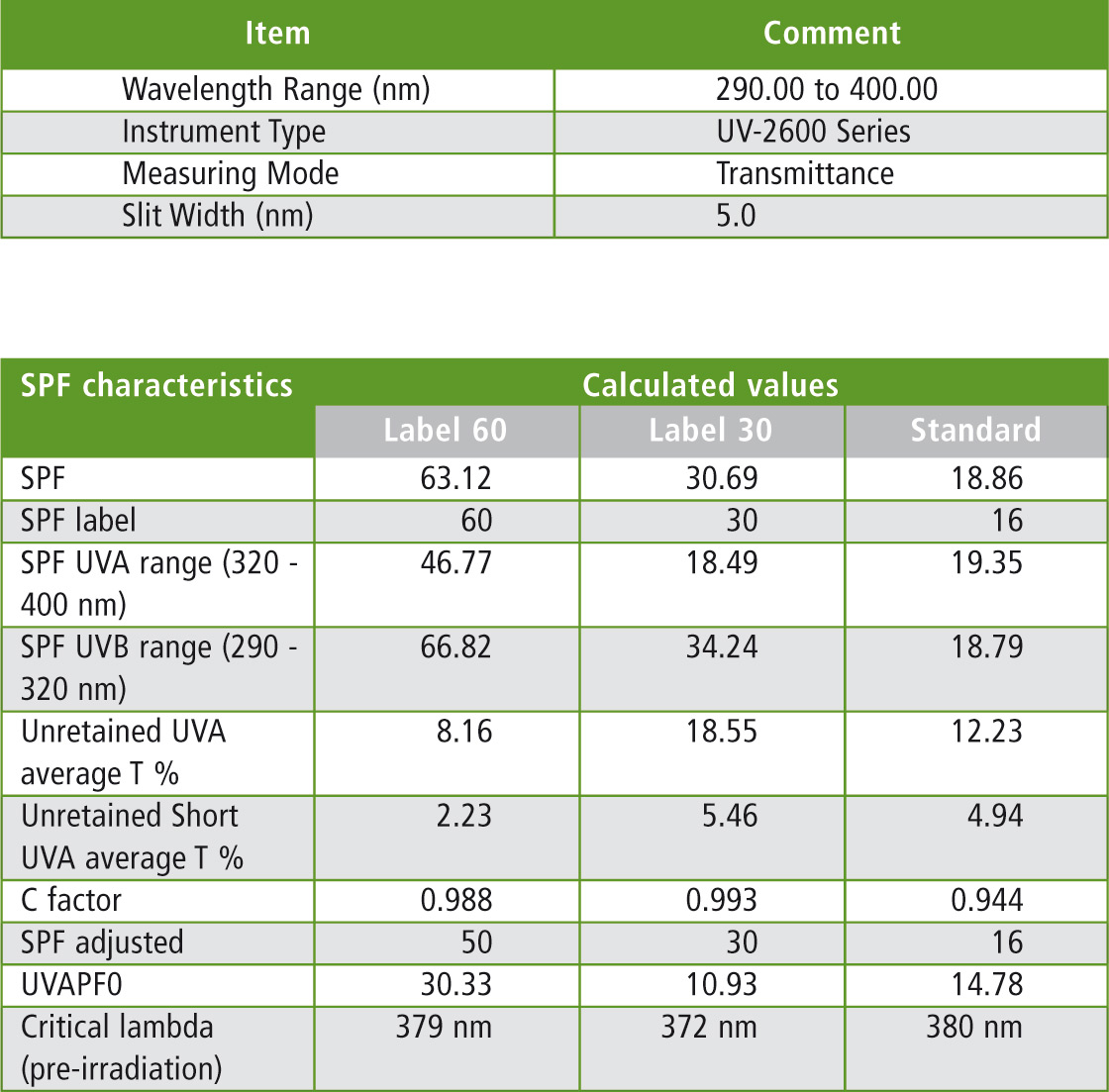Sun and fun for everyone
SPF determination with UV-VIS spectra

The sun protection factor SPF will be one of the most important topics in the near future. Due to changes in the global climate, temperatures and exposure to sun will increase. Humans and animals will be sunburnt more easily than in the past.
30 years ago a sun blocker with an SPF of 10 was regarded as a high protection factor. Nowadays, a protection factor of 50 produced especially for children is normal. It is difficult to find a reliable procedure for controlling the production of such mixtures in lotions, milks and creams.
What does SPF stand for?
Sun protection is needed against exposure through UV-A and UV-B radiation from natural sunlight. UV-A is by definition the range of 380 to approx. 315 nm and UV-B is the range from 315 down to 280 nm on the wavelength scale.
The target of a cream is to work as a cutoff filter. The exposure time for the skin is reduced. SPF 10 simply means that the treated skin can stay 10 times longer in the sun than under normal conditions.
 Figure 1: Preparation of a sample onto the PMMA polymer plate following recommendations of COLIPA documentation
Figure 1: Preparation of a sample onto the PMMA polymer plate following recommendations of COLIPA documentation
The usual sun blockers are often prepared with TiO2 which gives the creams and lotions their white color. TiO2 is a white pigment and by nature an ideal reflector of the radiation. But this is only one aspect of such complex mixtures.
There is a particular focus on sun transmission which is able to pass the sun blocker film. In principle, the sun blocker products can be prepared in a capillary cell with very low thickness. But the spectra resulting from these measurements all show different signal structures, preventing comparison based on the SPF factor.
The COLIPA Guidelines define a common understanding of SPF products for all suppliers. The guidelines describe a method for the preparation of samples, simulation of the skin, measurement technique and analysis of the results.
30 and 50+ SPF in the spotlight
A PMMA polymer plate simulates the skin surface on which 32 mg of cream is distributed. The plate surface has a specified roughness of approx. 5 µm and is suitable for collecting the transmittance of light by UV-VIS spectroscopy combined with an integrating sphere. The measurement procedures are described in the COLIPA method.
This method demands many repeat measurements and calculations of sum parameters from the data points of the spectra. Its mathematical results are the SPF value and the critical wavelength. The sample and calculation result is shown for a material labeled with SPF 50+. In this example, four measurements were carried out (shown in Figure 2).
 Figure 2: Four UV-VIS spectra of the COLIPA experiment used for each sample: red was SPF 30, green 50+ and black was a COLIPA Standard (SPF 16), all measurements performed before exposure
Figure 2: Four UV-VIS spectra of the COLIPA experiment used for each sample: red was SPF 30, green 50+ and black was a COLIPA Standard (SPF 16), all measurements performed before exposure
These spectra were entered into the SPF calculator software and the result of the SPF 50+ sample is shown in figure 3.
 Figure 3: SPF calculation for four UV-VIS spectra from a sun blocker defined as SPF 50+, the graph shows absorbance and transmission spectra, comment lines and inputs required as well as calculated results
Figure 3: SPF calculation for four UV-VIS spectra from a sun blocker defined as SPF 50+, the graph shows absorbance and transmission spectra, comment lines and inputs required as well as calculated results
These simple samples were not irradiated with an UV lamp. Table 2 shows a selection of values for all three samples. In table 1 the most important parameters are shown.
 Table 1: Measurement parameters for UV-2600 in combination with the ISR-2600 integrating sphere
Table 1: Measurement parameters for UV-2600 in combination with the ISR-2600 integrating sphere
 Table 2: Calculated SPF results from typical UV-VIS spectra of sun crèmes. Calculation equations are described in the COLIPA document.
Table 2: Calculated SPF results from typical UV-VIS spectra of sun crèmes. Calculation equations are described in the COLIPA document.
Conclusion
The UV-VIS-spectrophotometer UV-2600 combined with ISR-2600 integrating sphere is ideal for this application: the same system analyzes the color of the sun cream as well as the packaging. The samples measured here are labeled with SPF 30 and SPF 50+, difficult to measure with older technologies but easy with the UV-2600 spectrophotometer.
Literature
[1] In vitro method for the determination of the UVA protection factor and “critical wavelength” values of sunscreen products, COLIPA Guidelines, March 2011